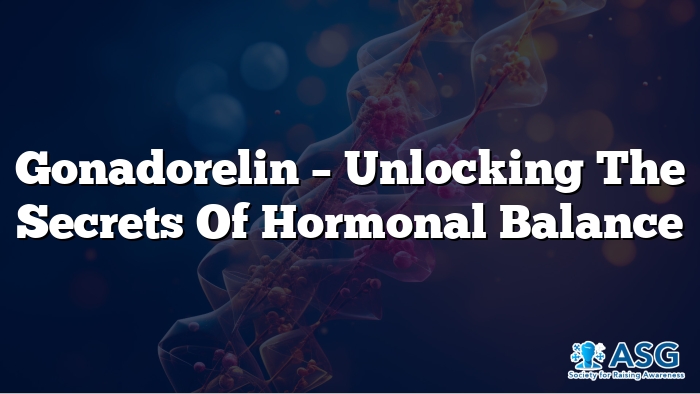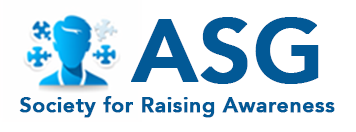Gonadorelin – Unlocking the Secrets of Hormonal Balance

Gonadorelin is a synthetic peptide that plays a crucial role in regulating reproductive hormones. It is often used in medical treatments to address various hormonal imbalances and reproductive issues. This peptide is known for its ability to stimulate the release of gonadotropins, which are essential for the proper functioning of the reproductive system. Understanding how Gonadorelin works and its applications can provide valuable insights into its potential benefits and uses.
What is Gonadorelin?
Gonadorelin is a synthetic peptide that mimics the natural gonadotropin-releasing hormone (GnRH). It is used to stimulate the release of luteinizing hormone (LH) and follicle-stimulating hormone (FSH) from the pituitary gland. These hormones are essential for reproductive health.
Gonadorelin is available in various forms, including injectable solutions and nasal sprays. It is commonly used in both human and veterinary medicine. The peptide is produced by peptide manufacturers and is subject to peptide quality control to ensure its efficacy and safety.
How Does Gonadorelin Work in the Body?
Gonadorelin works by binding to GnRH receptors in the pituitary gland. This binding stimulates the release of LH and FSH. These hormones play a crucial role in regulating the menstrual cycle and ovulation in females and spermatogenesis in males.
The peptide's mechanism of action involves a feedback loop that helps maintain hormonal balance. When Gonadorelin is administered, it triggers a cascade of hormonal events that promote reproductive health. This process is essential for fertility and overall reproductive function.
Medical Uses of Gonadorelin
Gonadorelin is used in various medical treatments to address hormonal imbalances. It is commonly used to treat conditions such as amenorrhea, delayed puberty, and infertility. The peptide is also used in diagnostic tests to assess pituitary function.
In fertility treatments, Gonadorelin is used to stimulate ovulation in women undergoing assisted reproductive technologies (ART). It is also used in men to stimulate spermatogenesis. The peptide's ability to regulate reproductive hormones makes it a valuable tool in medical practice.
Gonadorelin and Hormonal Balance
Gonadorelin plays a crucial role in maintaining hormonal balance. By stimulating the release of LH and FSH, it helps regulate the menstrual cycle and ovulation. This balance is essential for reproductive hea

lth and fertility.
Hormonal imbalances can lead to various health issues, including infertility and menstrual irregularities. Gonadorelin helps restore this balance, promoting overall reproductive health. Its use in medical treatments highlights its importance in maintaining hormonal equilibrium.
Potential Side Effects of Gonadorelin
Like any medication, Gonadorelin can have potential side effects. Common side effects include headaches, nausea, and abdominal pain. These side effects are usually mild and temporary.
In rare cases, more severe side effects may occur, such as allergic reactions or changes in blood pressure. It is essential to monitor patients closely and adjust dosages as needed. Consulting with a healthcare professional is crucial to ensure safe and effective use of Gonadorelin.
Gonadorelin in Fertility Treatments
Gonadorelin is widely used in fertility treatments to stimulate ovulation. It is often used in combination with other medications to enhance its effectiveness. The peptide helps regulate the menstrual cycle and promotes the release of mature eggs.
In men, Gonadorelin is used to stimulate spermatogenesis. This is particularly useful in cases of male infertility. The peptide's ability to regulate reproductive hormones makes it a valuable tool in fertility treatments.
Comparing Gonadorelin to Other Hormone Therapies
Gonadorelin is often compared to other hormone therapies, such as clomiphene and human chorionic gonadotropin (hCG). Each therapy has its unique mechanism of action and applications. Gonadorelin directly stimulates the release of LH and FSH, while clomiphene works by blocking estrogen receptors.
hCG mimics LH and is used to trigger ovulation. Gonadorelin's direct action on the pituitary gland makes it a preferred choice in certain treatments. Understanding the differences between these therapies helps healthcare professionals choose the most appropriate treatment for their patients.
Administration Methods for Gonadorelin
Gonadorelin can be administered through various methods, including injections and nasal sprays. Injectable forms are commonly used in medical settings. Nasal sprays offer a convenient alternative for patients who prefer non-invasive administration.
The choice of administration method depends on the patient's condition and treatment goals. Healthcare professionals determine the most suitable method based on individual needs. Proper administration ensures the peptide's effectiveness and safety.
Gonadorelin Dosage Guidelines
Dosage guidelines for Gonadorelin vary based on the patient's condition and treatment goals. In fertility treatments, dosages are carefully monitored and adjusted to achieve the desired hormonal response. The peptide is typically administered in cycles to mimic the natural menstrual cycle.
Healthcare professionals determine the appropriate dosage based on factors such as age, weight, and medical history. Following dosage guidelines is crucial to ensure the peptide's effectiveness and minimize potential side effects.
Research and Studies on Gonadorelin
Extensive research and studies have been conducted on Gonadorelin to understand its mechanisms and applications. Clinical trials have demonstrated its effectiveness in treating hormonal imbalances and infertility. Ongoing research continues to explore new uses and potential benefits.
Studies have also investigated the peptide's safety profile and potential side effects. The findings support its use in medical practice, highlighting its importance in reproductive health. Continued research is essential to uncover new insights and improve treatment outcomes.
Gonadorelin in Veterinary Medicine
Gonadorelin is also used in veterinary medicine to address reproductive issues in animals. It is commonly used in livestock to stimulate ovulation and improve fertility. The peptide's ability to regulate reproductive hormones makes it valuable in animal breeding programs.
Veterinarians use Gonadorelin to manage reproductive health in various animal species. Its applications in veterinary medicine highlight its versatility and importance in promoting animal health and productivity.
Gonadorelin and Menstrual Cycle Regulation
Gonadorelin plays a crucial role in regulating the menstrual cycle. By stimulating the release of LH and FSH, it helps maintain regular ovulation and menstrual periods. This regulation is essential for reproductive health and fertility.
Hormonal imbalances can disrupt the menstrual cycle, leading to irregular periods or amenorrhea. Gonadorelin helps restore hormonal balance, promoting regular menstrual cycles. Its use in menstrual cycle regulation highlights its importance in reproductive health.
Patient Experiences with Gonadorelin
Patient experiences with Gonadorelin vary based on individual conditions and treatment goals. Many patients report positive outcomes, including improved fertility and hormonal balance. The peptide's effectiveness in treating reproductive issues is well-documented.
Some patients may experience mild side effects, such as headaches or nausea. These side effects are usually temporary and manageable. Overall, patient experiences highlight the peptide's benefits and its role in promoting reproductive health.
Gonadorelin and Puberty Disorders
Gonadorelin is used to treat puberty disorders, such as delayed puberty. The peptide stimulates the release of LH and FSH, promoting the onset of puberty. This treatment helps address hormonal deficiencies and supports normal development.
In cases of precocious puberty, Gonadorelin can be used to delay the onset of puberty. The peptide's ability to regulate hormonal balance makes it valuable in managing puberty disorders. Its use in pediatric endocrinology highlights its importance in promoting healthy development.
Future Directions in Gonadorelin Research
Future research on Gonadorelin aims to uncover new applications and improve treatment outcomes. Ongoing studies explore its potential benefits in various medical conditions. Researchers are also investigating new administration methods and dosage guidelines.
Advancements in peptide synthesis and quality control contribute to the development of more effective and safe treatments. Continued research is essential to expand our understanding of Gonadorelin and its potential benefits. The future of Gonadorelin research holds promise for improving reproductive health and overall well-being.
Conclusion
Gonadorelin is a synthetic peptide with significant applications in reproductive health. Its ability to stimulate the release of LH and FSH makes it valuable in treating hormonal imbalances and fertility issues. The peptide's versatility extends to both human and veterinary medicine, highlighting its importance in promoting reproductive health across species. Understanding Gonadorelin's mechanisms, uses, and potential side effects is crucial for healthcare professionals and patients alike. Continued research and advancements in peptide synthesis and quality control will further enhance its applications and benefits. Gonadorelin remains a vital tool in the field of reproductive medicine, offering hope and solutions for those facing hormonal and fertility challenges.
Frequently Asked Questions
What are the common side effects of Gonadorelin?
Common side effects of Gonadorelin include headaches, nausea, and abdominal pain. These side effects are usually mild and temporary. In rare cases, more severe side effects may occur, such as allergic reactions or changes in blood pressure. It is essential to monitor patients closely and adjust dosages as needed.
How is Gonadorelin administered?
Gonadorelin can be administered through various methods, including injections and nasal sprays. Injectable forms are commonly used in medical settings, while nasal sprays offer a convenient alternative for patients who prefer non-invasive administration. The choice of administration method depends on the patient's condition and treatment goals.
What are the medical uses of Gonadorelin?
Gonadorelin is used to treat various hormonal imbalances and reproductive issues. It is commonly used to address conditions such as amenorrhea, delayed puberty, and infertility. In fertility treatments, Gonadorelin is used to stimulate ovulation in women and spermatogenesis in men. The peptide is also used in diagnostic tests to assess pituitary function.
| Feature | Details |
|---|---|
| Mechanism of Action | Stimulates the release of LH and FSH from the pituitary gland |
| Medical Uses | Treats hormonal imbalances, infertility, and puberty disorders |
| Administration Methods | Injections and nasal sprays |
| Common Side Effects | Headaches, nausea, abdominal pain |
| Research and Studies | Extensive research on mechanisms and applications |
